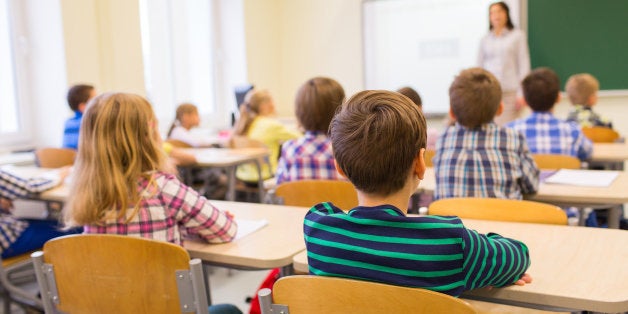
At the end of last year, educators across the U.S. celebrated as President Barack Obama signed into law the Every Student Succeeds Act (ESSA), which included for the first time a nod to the power of the arts in creating a well-rounded education.
While we have the rare opportunity to make arts education shine brighter than ever, we have a long road ahead of us. The arts have been whittled away at in public schools for over two generations, especially in urban areas deeply affected by budget cuts. As a result, we've created an entire generation that is artistically illiterate.
This is a problem for many reasons. For decades, students have missed out on the beneficial effects the arts can have on learning. In 2009, the Center for Arts Education published a report that showed schools with the lowest access to arts education and resources also had the highest dropout rates, whereas those with the highest graduation rates had the most access to arts programs. Many other studies report sustained arts education can be an essential part of social and intellectual development. Practicing music, for instance, has been shown to positively impact everything from cognitive skills to focus and IQ.
Despite this, for decades, classrooms across the nation have lacked even the most basic arts programs and tools.
New York City, a cultural mecca, is a shining example of a community that has struggled for years to keep arts education afloat. Federal funding cuts devastated public schools' ability to provide basic courses in core art areas during the fiscal crisis of the 1970s. For about 20 years, arts and cultural institutions attempted to fill this gap, but it wasn't until 1997 that the New York Board of Education created Project ARTS, the first per capita funding allocation for arts education since the 1970s, according to the New York City Comptroller 2014 State of the Arts Report. However, its success was short lived. In 2008, the administration eliminated the program, folding funding for arts education into the general school budget and eventually omitting the arts from its central accountability system, driven largely by the No Child Left Behind Act.
During his tenure, former Mayor Michael Bloomberg poured millions of dollars into boosting and improving cultural institutions and projects throughout the city. From 2002 to 2013 alone, the city spent $2.8 billion on cultural expansions, renovations and new construction, with Bloomberg contributing more than $200 million of his personal fortune to arts groups around the city. However, these efforts did not really spill over into our public schools. In 2014, according to the State of the Arts Report, 28 percent of schools in New York lacked even one full-time, certified arts teacher, 16 percent of schools had no arts or cultural partnerships and 10 percent of schools had no dedicated arts room.
While we cannot rewrite our history, we can surely influence the path of our future. With the passage of ESSA, legislators must now work to incorporate music, dance, drama, visual arts and theater into the classroom and close the gap in arts literacy. They can't do it in a vacuum. They must tap into the knowledge of local arts and cultural organizations, professional musicians, artists and dancers, business leaders and more to help our schools establish arts curricula that are effective, robust and impactful.
Some states are already doing this successfully. Minnesota has the Perpich Center for Arts Education, making it one of only a handful of areas with a dedicated state agency supporting arts education. The center helps shape academic standards in the arts in grades K-12, collaborates with the Board of Teaching to develop educator licenses in the arts and provides professional development for teachers around the state. The Florida Art Education Association provides visual art educators in the state with the skills, knowledge and support needed to provide high-quality instruction to all students. In Texas, Learning Partners based in Dallas harnesses community arts and cultural organizations to help serve thousands of elementary educators in the city, providing a framework for maximizing cultural resources in their area.
Here in New York, I know we have valuable experience and expertise to offer our local schools.
At the Kaufman Music Center, the institution I head, we have the Special Music School (P.S. 859), the only New York K-12 public school with music as a core curriculum subject, combining intensive music instruction with a rigorous academic program. Our students consistently score in the top ten of all NYC public schools on statewide reading and math tests, last year earning the highest scores in the city. Our educators and directors can help other teachers, board members and policymakers strategize how to incorporate music programs into classrooms, identify what methods are most beneficial to students and brainstorm ways to apply the lessons music teaches into other coursework areas.
The arts are one of our nation's most precious gems, with the power to help foster a more well-rounded, compassionate, creative and innovative generation of young learners. For the first time in history, we have the chance to rewrite the lyrics of arts education in public schools. If we take a holistic approach, we will not fall flat.